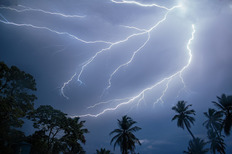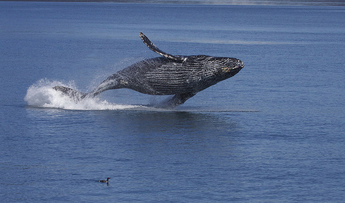
The lightning bird is a mythical bird in the folklore and traditions of different peoples of South Africa, such as the Zulu, Pondo, and Xhosa people. Sometimes it is called the impundulu, thewane, izulu, and also the inyoni yezulu. It is supposed to have the ability to call up thunder and lightning with its talons and wings.
According to African folklore and tradition it is strongly associated with witchcraft. It is said to be a vampire bird that is often a servant, confidant, or a familiar of a witch, or witch doctor. The lightning bird cannot be killed by shooting or stabbing and it cannot be drowned or poisoned. The only way it can be killed is by burning with fire if it can be caught, otherwise it is said to be immortal and outlives its masters. Legend says that it is inherited from mother to daughter in the family of the witch or witch doctor to whom it belongs and will do the bidding of its current master. Read more

 RSS Feed
RSS Feed
